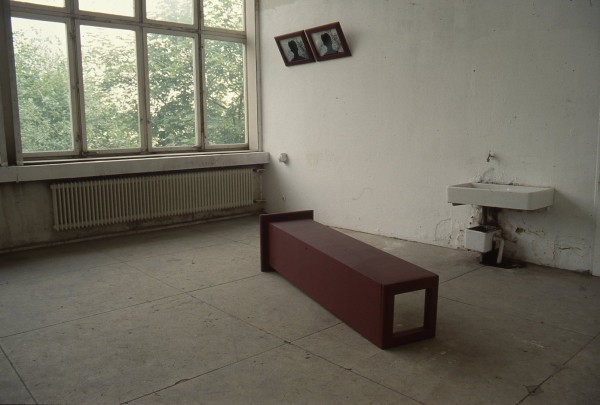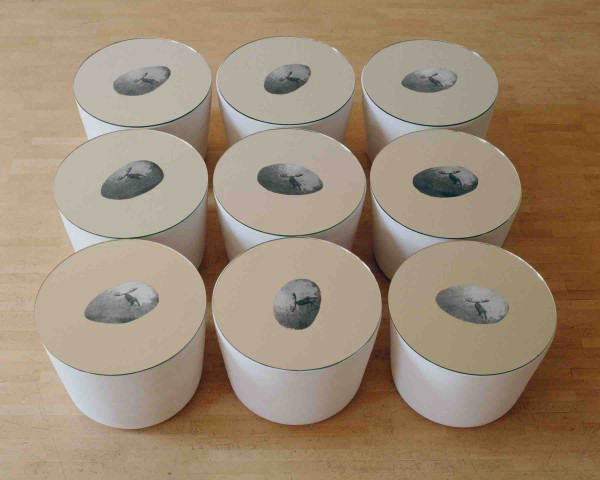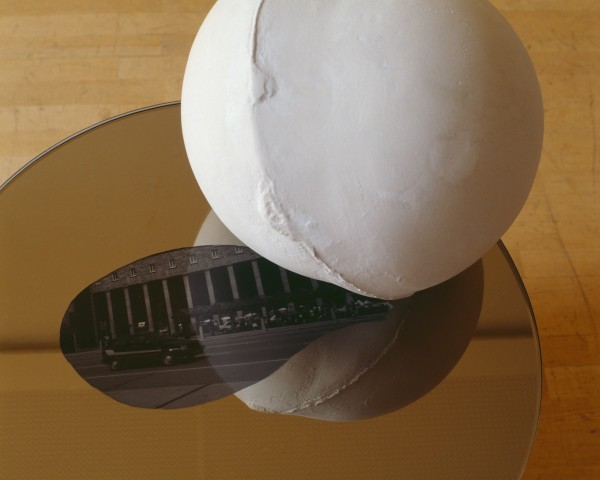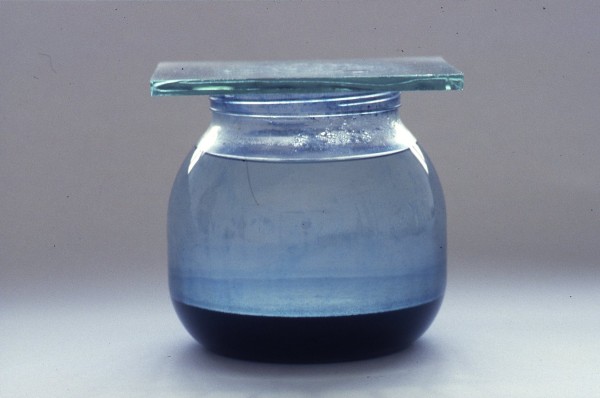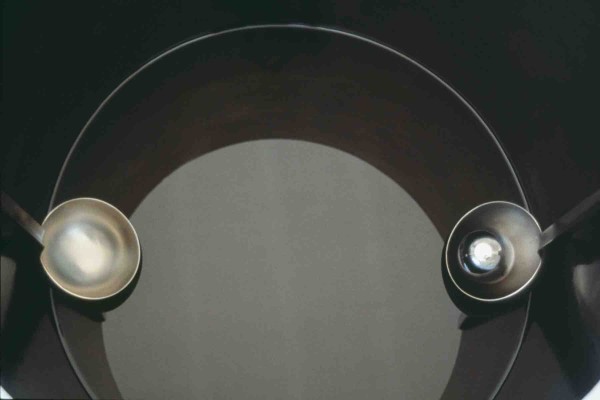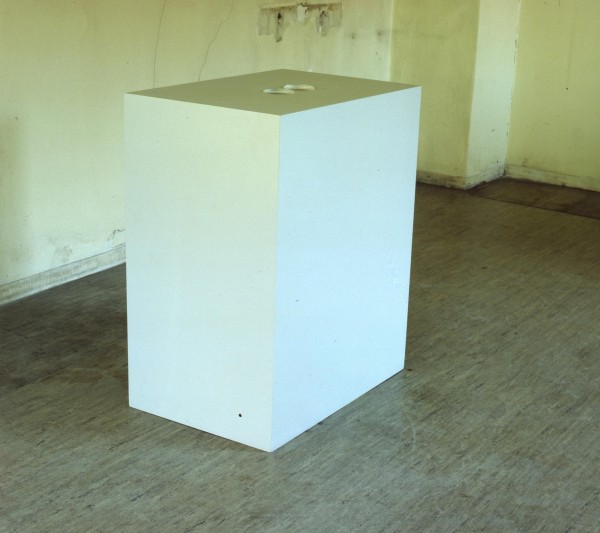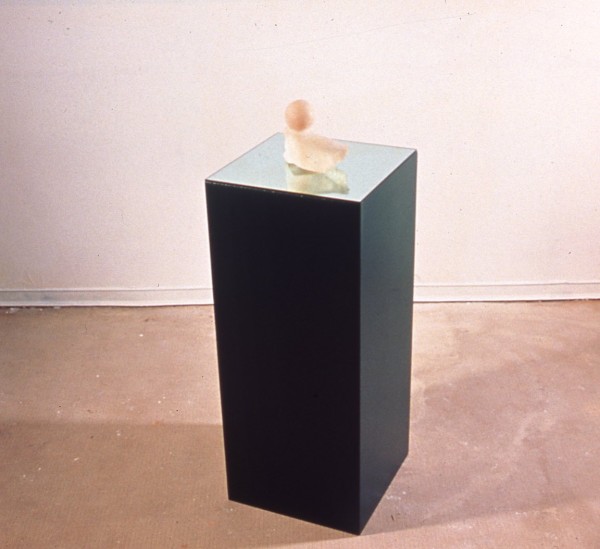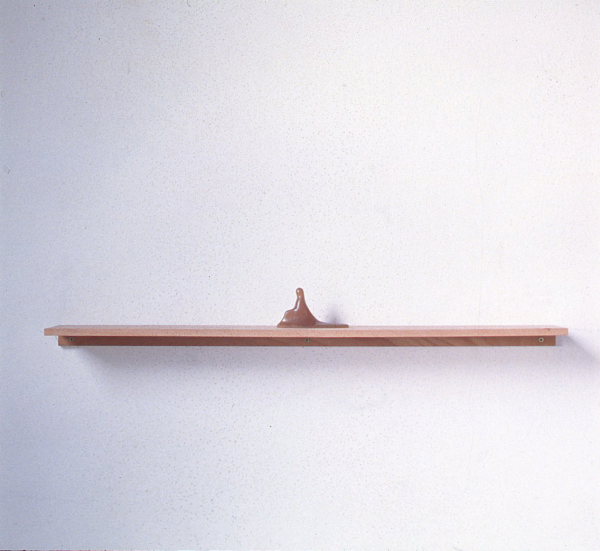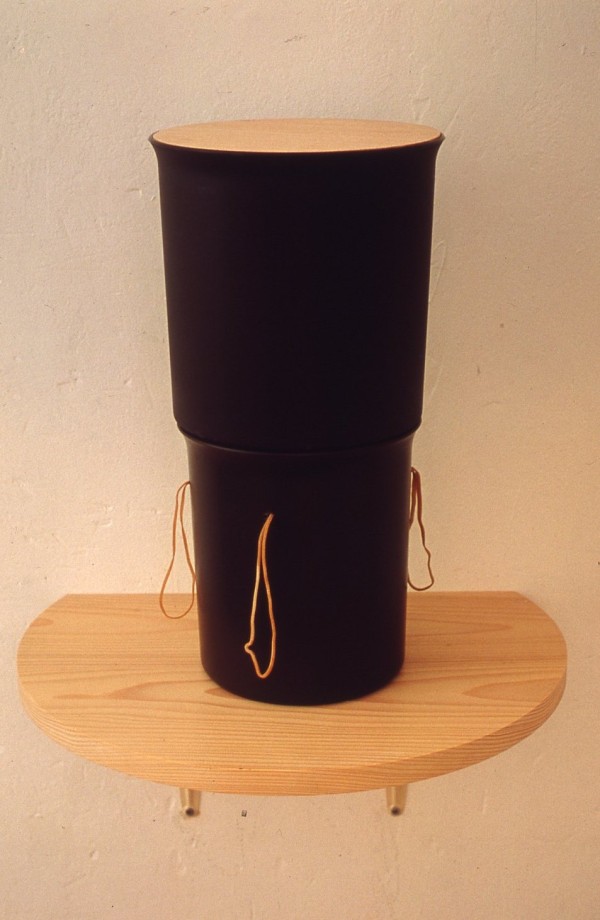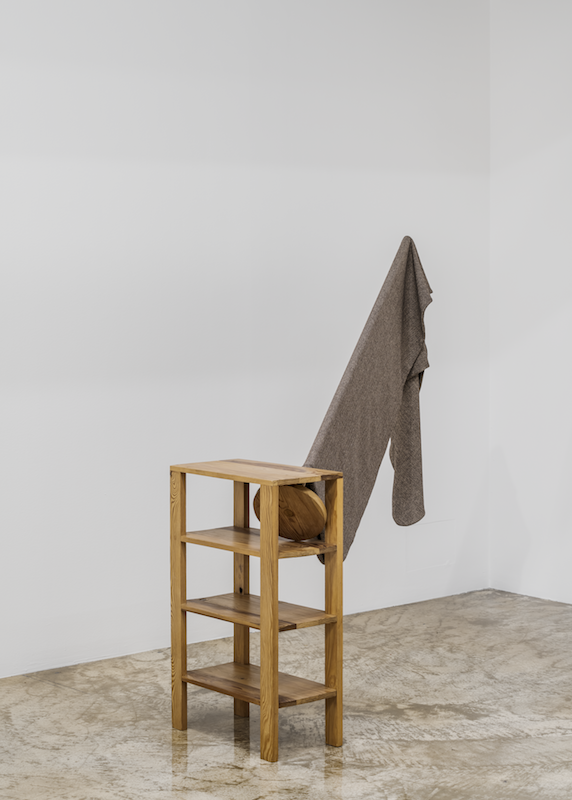A Little Bit Sandy but Moving Relationships with Things: On an Anxiety from Prudence and Love; Chung Seo Young’s Sculptures
1. Things, the Attackers
There was a thing at first. No. Let us tell it more correctly. There was a self that recognized that there was a thing. Chung Seo Young starts at this points. Her being puzzles suddenly in front of things that attack her on a day. She wrote about the situation on her M.A. thesis as follows:
“What are things themselves? As for me, they were thought to be some sudden-coming-across ones.”
(Bold types are Chung Seo Young’s own)
They were very cold and dreadful ones that have nothing to aim. They inhabit the interior of themselves as some forms of intrinsic opaqueness. Her screen of recognition meets the animosity of things by sudden on a day and crashes against it with noises. And it seems to be finished for all. There is no clue to open the things themselves. There is no one who clarify it. Ought to be one called back things to themselves again? As Heidegger ought to? Or ought to be a mirror of Chang Zhou? The mirror cannot take and part the things. It can just only reflect. The duty of Self is to be with things, the unfamiliarity of things and the confusion of things. That leads one to be coexisted with things and left the things with their sums.
Chung Seo Young, not philosopher nor meditator but the artist is, however, cannot stop her role on things at designating the role of recognition of it. As she an sculptor, it should be given for her to represent the ‘form’ of things. She confesses in her essay, “The Night of Things”, as follows:
“But I wanted something again. I wanted to try something beyond the things themselves. Is it prohibited for one to speculate the things? What is beyond the objective description? It provides me with an unconscious and necessary evaluation. The projection gives some nuances that are the negation, critical attitude, speculation and gaze to no certainty and a desire to free from any doctrines of mind.”
(Bold types are Chung Seo Young’s and italicised ones are Kim Chung Ran’s)
She admits the inability of her self, but tries to do something. She cannot abandon her wish to approach to things and participate in them. An artist is, according to her definition, a participant and projector. She induces the light into the night of things. The light is dim and a little one because she knew that there was a failure of producing so many othernesses in the pursuit of humanity since it has been tried to. She knew it well also that there were many losses of rights of statement.
“I was careful of the fact that I was easily to be inclined on Human-oriented ideologies. I thought it over again and was afraid of the narrowness of human to rule over things.”
(The emphases by Chung Seo Young)
Chung Seo Young denies the greatness of human being. It comes from the language of otherness. The one that is an otherness and a volunteer for others sake breaks at first the belief of identity. S(he) is the self that is humble and open to every other things. S(he) knows well that the rights of snobbish people indulged into the lights of greatness and lost the poor rights of themselves. No, it cannot be called to be great. The ‘being great’ to Annie Leclerc is just but a male initiatives to hinder the development and it can be reduced to be only a king of bombast.
Great woman cannot be great man. As for woman, the greatness is only some centimeters rule. —Annie Leclerc, Parole de Femme (Grasset, Paris, P.9)
2. The Overcoming Things
Chung Seo Young seems to have been humble as what she wanted to be. Her early works stood to be opened to things, but they were limited on the base of epistemological logics. They were the strifes for contact to things and thingness. She digs some gypsum, cuts the woods and shows its scar, grinds the steel and shows the scratched ones, put some papers into the gypsum and cover the steel plate with some leathers. These works are successful in representing the doubleness of things after experiencing the physicality of materials. She confesses as follows: “I got an pleasurable endurance of contacting with things, but I recognized the meeting with things were just the surface of meeting. And I asked myself if my experience with them was real or not?”
Chung Seo Young takes a more direct way to things in order to dive deeper into the things. (It contrasts with her recent inclinations of diverse approach to things.) She limited her materials but introduced many folded ways to the chosen things. Chung Seo Young takes some iron and she experience many styles with them. She takes it as a cubic and rises it upright as a classical form. (As usual, every sculptures stood upright against their mother earth, they looked to be a monument for father’s victory. Recently she lays them down for reverse of meaning or their symbolizing effect such as an upside down head or a laying man on a panel. Are they some horizontality against the power of male verticality?) After it, She added the steel panel cut seriously to the main body. They are hanged by side or upper part of it like some supplements. Sometimes they are apart from the main body and seems to be independent of it, but they are, in fact, never free from it. They confess their dependencies and crouched themselves quietly.
Chug Seo Young is limited in the speculation of basic patterning. She took the method of relying upon the basic pattern and drive her materials that are not formed, conquered and dirty to the fine basics. In a case, she tried to put the panels cut into the cubic inside and send them again to their original place. The othernesses are little but poor infants in incubator. She relies her identity upon the masculine ideologies that sacrificed feminity for their own greatness. The one is absolutely greater than the other. God is only one. This contrasts her recent works that denies the only one greatness but admits the counter-greatness of both. Both are no inferior and superior.
The reason that she takes iron or steel for her material is intended and calculated with care. Those are humanistic materials. The invention of steel overwhelmed the nature. The coldness and intellectual aspects of it attracted the artist. The speciality of it seduced her and drove her into the appetite to meet them (Contrast these histories to her recent materials like wood, plastic, gypsum and clothes). The young artist run to the hard ones to deal with it eagerly and passionately. To get more light steel? No, it meant the hard times, actions, self-confidence and perseverance.
3. Heart or Smooth Deviation
She might be tired for a long time. It was probably due to the abstraction of her work itself. I take granted that there were installations at her first abroad exhibition. There are contexts of life itself in them and they introduce the story to the work. There are some weaknesses to be found out fault with it in her early work, The Steps to Picnic because it has some imaginations of fairy tale. But it might spring up in her inner world naturally. The artist might hunger for the directness. And after that period, she might part with her early vague abstractions.
But the close reading her works makes them to be a whole sincere desire to broaden the intellectual horizon and to arrive at a perfection. It is a sort of innocence of intellect that are barricaded from the intrusion of ineffciency. It is a vaccinated area, metaphorically speaking. More to these, there were some affirmative projection for her to approve the liveliness of life in it.
In this respect, Chung Seo Young seemed to guess a meaningful and warm reversal. The Untitled, 1992 has two pieces of photograph taking her own backs, the bright trees surrounding her beautiful ambiance, the panels declined and the mirror on the panel. The dirty red color on it was, according to her explanations, chosen by her intention because it has some intrinsic coarseness. The mixed color on the door of farm house was chosen, according to her expression, to represent ‘the passionate desire to express’. So to speak, they were chosen to be against the taboo of modern art and not for agents but for artist to express the function of mind. These brightens the two back of photographs to be the unidentified selves. They are doubled ones that are overlapped by the otherness. The dark unidentified one is like the spectator who does not see his feet in it. It works outside the artist’s mind. How wonderful its slopes! The artist free herself to the work’s own way, being closely beside the wall and forsaking the objective balance of it. Chung Seo Young perfumes poetic fragrance with her works.
The doubleness of mind represented by the mirror in her work, The Third Person Plural. There are reindeers in the middle of the work. The photographs of reindeers were took not with real animal but with plastic models. What the model in it were is not important. The most important thing is that the image of it is buoyant over every comer of the works and wanders to and fro. The reality of image does not exist at all. It fluctuates on the changeability of mind. Does our mind do like the third person does? Or is it the third person himself?
Chung Seo Young induce the aspects of mind carefully into her sculptures. (For example, The Station that has a 70’s style car, an aged photograph and a round angle with some sweaters that obscures any formula). Are these representations based on her negligence of the history of western art? Her recent works answer the question more clearly. She is sure to be awakened to realize her oriental identity in her strange room in Deutschland.
4. The Modest Proposal-the Least Intrusion
Leaning on the liberal direction of mind, Chung Seo Young starts to pursue diversity. The conquer of quality of material, the early theme of her works is took the place of diversity. Her themes seem to lack in a coherence in a way. Because she hits and runs. The artist plays in one corner and soon after she appears in the other side. The details of the works operate individually and hide from ordering any kind of determinism. What in the world is this separate, live and hidden desire?
The disordered looking works of Chung Seo Young are, in fact, variational ones from same motifs. Her desire is simple. It is not fixed one, never fixed one and no fixed one. She disturbs everything in order. But the spectators of her works miss the disturbance because her mechanic is too minute to grasp. Meanwhile, seeing her works through leads to comment anything on them.
She is opened to any materials. She is interested not in the works but just in the contexts or the situations of the works. She is not a sculptor, but shower of its options in reality. Her The Landscape, 1991 proves it well. After bleeding colors into the glass vase with water, she covers it with the fragments she brought into. The process of making work is confined to minimum. The work does not cry out loud. That kind of work does not deliver a universal idea or ready-made message. But it tells uniquely. It speaks originally, so makes people uncomfortable. Nobody, however, gets angry with her works in that the works are innocent and animation-like. Her works are not aggressive. The oriental woman does not want to attack irrationally at all. “The greatness is all up to you.” There are thousands and millions of sculpture like this kind of rashness in the world.
Her humors such as the flower-like sponge put in a bottle, the rubber band on the vase put together at random and some pieces of clothes rapped on the shelf do not come from the coarse wit. They originate in her oriental roots that have been trained, observed and acquired for a long time. The foolish looking but natural way of representation! It does not produce animosity at all with its sharp appearance. How fruitful way of aesthetics she has!
5. The Little, but Incessant Movements
Some works of Chung Seo Young propose the visitors to step into them. They are perfected by the participation of the spectator. The Untitled made between 1991 and 1992 has two eccentric elements that the one is the car oil in a tub and the other is a ladle. The audience are obliged into seeing what the tub has. They are already entrapped by the artist’s devise. And soon after they are challenged by the next one. Encircled by the relational traps of the work, they think about the use of a ladle and some oils in the tub. They are enchanted.
Private Box, 1992 has the same function. The Lens on the box seduce the spectators, who take part in the work with pleasure. They are satisfied with the dim light they find. Still Life, 1993 seems to be an oblique ones, but it reveals itself to the people who comes close to it to be upside down heads in real. The Sculpture with a View and a Poor View, 1995 cannot be appreciated without approaching to it. The Sculpture of Desire to Possess is similar to these ones. There are some unidentifiable forms which look like an lava mass or an woman who sits alone. The people who come close meet the delicate pattern in it.
The spectators who are accustomed to ready made ones may complain her works of their own moving to apprehend. But the works Chung Seo Young does not urge to do it, instead, they are seduced to come close to her works with their pleasures. The spectators are happy to reawaken their own ability to see the new relationship with things with the help of Chung Seo Young’s works.
The Works Made From Tens of Paintings and Some Sculptures has interesting classical frames. But the sculpture are not safe and no classical in some respects. The handles for train passenger’s safety is reversed in their directions. Of course it warms visitors the safety of the components of the work like the plastic vase with rubber band, bottle laid down obliquely and the high way paintings twisted on the bottle. The spectators in her room are amazed at this oxymoronic relationships. They fall in charming confusion.
This explains that her works try to acquire movability. The movability makes the work and spectators into one, and it is neither fixed one nor stable one. The spectators in front of her works are never be at peace, the dead peace of mind. The relationship between the work and their spectators are changed and renewed continually. Although Chung Seo Young’s renewed relationship is not shocking as much as Duchamp’s Fountain, the anxiety of it endures longer that his one because she has more minute and delicate way of aesthetics. How to attack her work and how deep she break the convention and the exception? The subtle coexistence of the convention and the exception! The immeasurable proportion of both!
I have been hanged to her repeated image of ‘ropes’. It is up to her concept of the ‘two’. The different two, and both are individual. Both does not coincide each other. Both are independent of each other, however, they are related each other in fact. Both are listening each other, but identifying themselves. Both comprehend the mythos of anxiety that are alwas waving, symbolize instability or indefinability and represent the self. But they are not anxiety itself. The only one that is anxious and worries is the self which plunge his nose into actuality. The other self enjoys it fully. The otherness that Sartre expelled to hell comes back again to ours as ‘the right to enlarge oneself’. I call my another being for you, kid as an vocative case. For it is not ‘I’ but ‘I’. The rope of Chung Seo Young is trembling at the end of the vocative. I am hanged again to the empty hole that Chung Seo Young was reluctant to call the perfect number ‘10’. The artist’s hole! Why does it do? All the forms are disappearing ad melting in it. Right! I am pulling the rope tenderly. The elasticity is varied all through the life. It is a fault not from the rope but from our recognition of it as we all know well.
Thus I take the anxiety of Chung Seo Young. In the name of life.
